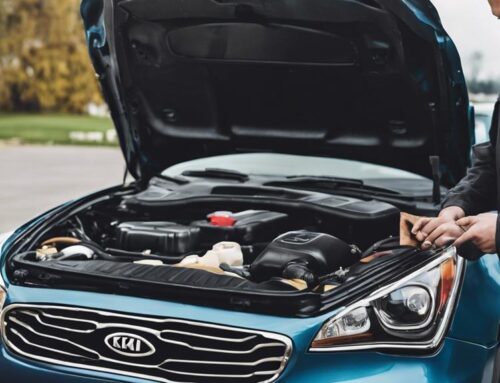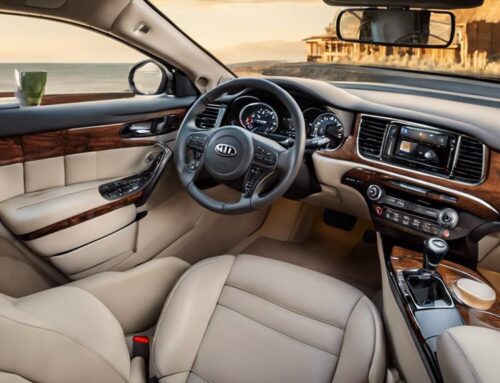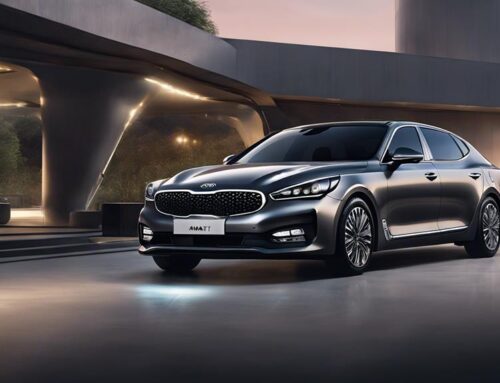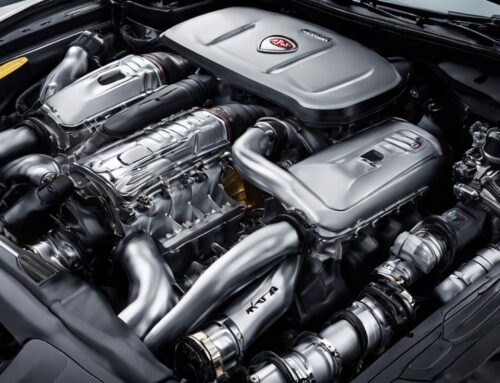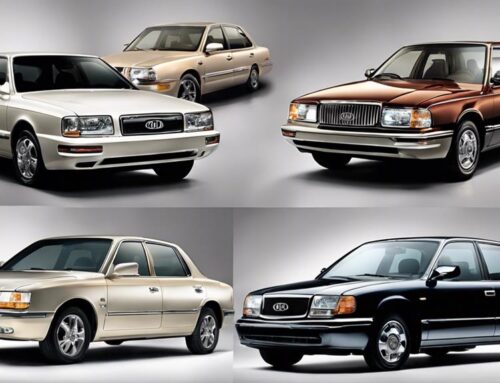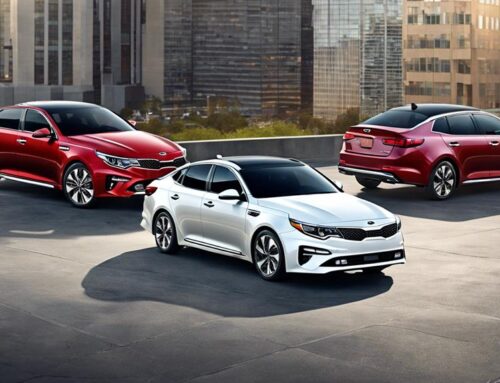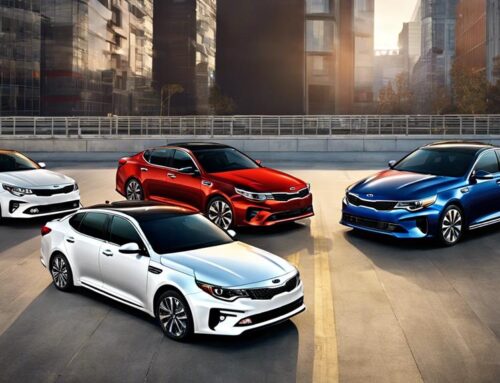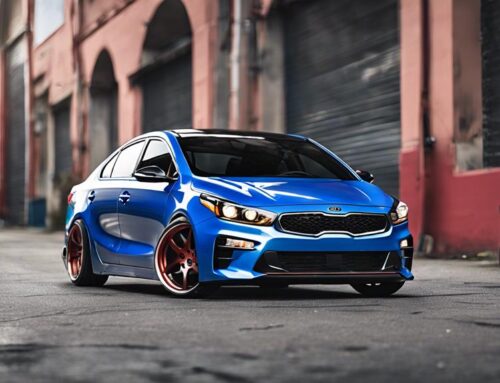With its rugged design and impressive performance, the Dodge Dakota has left an indelible mark on the mid-size pickup truck segment. Since its introduction in 1986, this powerhouse vehicle has captivated drivers with its durability and reliability.
Combining shared components to keep costs low and innovative features like rack and pinion steering, the Dakota set the standard for future mid-size trucks.
In this article, we will delve into the history, development, and lasting legacy of the iconic Dodge Dakota.
History and Development of the Dodge Dakota
The Dodge Dakota was introduced in the late 1980s as a mid-size pickup truck and underwent various changes throughout its three generations.
It had a significant impact on the mid-size truck market, as it was the first of its kind to bridge the gap between compact trucks and full-sized pickups.
The Dakota played a crucial role in Chrysler’s product lineup, being marketed under the Dodge brand until 2009 and then under the Ram brand for the final two years.
It was developed by Chrysler with shared components to keep costs low, and it became known for its durability and reliability.
Despite its success, declining sales and pricing compared to full-sized Ram trucks led to its discontinuation in 2011.
However, the Dakota’s legacy and influence paved the way for the mid-size truck segment and influenced other automakers to introduce their own mid-size trucks.
First Generation (1987-1996): Features and Specifications
Introduced in 1987, the first generation of the mid-size pickup truck offered optional V8 engines and a range of transmission options. The Dodge Dakota’s performance capabilities and engine options made it a versatile choice for truck enthusiasts.
- Engine options included inline-four and V6 engines, providing a balance between power and fuel efficiency.
- The optional V8 engine offered increased horsepower and towing capabilities, making it suitable for heavier loads.
- With a five-speed manual or three-speed automatic transmission, drivers could choose the option that best suited their driving preferences.
- The Dakota’s four-wheel drive was available only with the V6 engine, allowing for enhanced off-road capabilities.
- The Lil Red Express Dakota and Dakota Warrior special editions featured unique step-side beds, adding a touch of style to the truck’s rugged appeal.
Overall, the first generation of the Dodge Dakota showcased its impressive performance capabilities and a wide range of engine options, making it a popular choice among truck enthusiasts.
Second Generation (1997-2004): Redesign and Improved Features
Redesigned with improved safety features, the second generation of the mid-size pickup truck offered various configurations and engine options. This generation, produced from 1997 to 2004, featured a new body design that enhanced both the truck’s appearance and its safety.
Customers could choose from regular cab, extended cab, and crew cab configurations, providing flexibility to meet their specific needs. Engine options included V6 and V8 engines, giving drivers the power they desired.
In terms of safety, the second generation Dakota incorporated enhanced features such as improved airbags and reinforced structures to provide better protection in the event of a collision.
These redesign improvements and enhanced safety features made the second generation Dodge Dakota a popular choice for those in the market for a mid-size pickup truck.
Third Generation (2005-2011): Enhanced Performance and Design
During its third generation from 2005 to 2011, the Dodge Dakota mid-size pickup truck showcased improved performance and a sleeker design. This generation of the Dakota featured several enhancements, including an enhanced powertrain and an improved interior.
Here are some key highlights:
- Enhanced powertrain options: The 2005-2011 Dakota offered a range of engine choices, including the 3.7L PowerTech V6 and the 4.7L PowerTech V8. These engines provided increased power and improved fuel efficiency.
- Improved interior: The cabin of the third-generation Dakota saw significant upgrades in terms of quality and comfort. The materials used were of higher quality, and the interior design was more modern and refined.
- Upgraded technology: The Dakota received updates in terms of technology, with features like Bluetooth connectivity, satellite radio, and advanced safety systems becoming available.
- Sleeker design: The third-generation Dakota had a more streamlined and contemporary exterior design compared to its predecessors, giving it a more modern and stylish appearance.
- Enhanced towing and hauling capabilities: The Dakota’s robust frame and improved suspension system allowed for increased towing and hauling capacities, making it a versatile and capable truck.
Overall, the third-generation Dodge Dakota offered a combination of enhanced performance, improved interior, and modern design, making it a strong contender in the mid-size pickup truck segment.
Legacy and Influence of the Dodge Dakota
The Dodge Dakota left a significant impact on the mid-size truck market, influencing other automakers to introduce their own models in this segment. With its market success, the Dakota played a crucial role in shaping the truck industry.
Introduced in 1986, the Dakota was the first mid-size pickup truck with optional V8 engine, offering a unique combination of power and versatility. It also introduced innovative features like rack and pinion steering. The Dakota’s reputation for durability and reliability further solidified its position in the market.
However, declining sales and competition from full-sized trucks led to its discontinuation in 2011. Nevertheless, the Dakota’s influence can still be seen today, as other automakers have followed suit by introducing their own mid-size trucks, filling the gap left by the Dakota.
The Future of Mid-Size Trucks: Dodge Dakota’s Impact
Introduced in 1986, the Dodge Dakota became a trailblazer in the mid-size truck segment, inspiring other automakers to develop their own models. The impact of the Dodge Dakota can still be felt today, as it has left a lasting legacy in the industry. As the future of mid-size trucks unfolds, the influence of the Dakota continues to shape the market.
Here are five key points to consider:
- Resurgence of the mid-size truck market: The success of the Dakota has sparked renewed interest in mid-size trucks, leading to the reintroduction of models like the Ford Ranger and the launch of new offerings from Chevrolet and Toyota.
- Increased versatility: Mid-size trucks like the Dakota offer a balance between the practicality of compact trucks and the power of full-size pickups, making them appealing to a wide range of consumers.
- Improved fuel efficiency: With advancements in technology, mid-size trucks now offer better fuel efficiency compared to their larger counterparts, making them more economical and environmentally friendly.
- Enhanced features and capabilities: The Dakota’s impact can be seen in the advancements made in mid-size trucks, such as improved towing capacities, advanced safety features, and modern infotainment systems.
- Growing demand for lifestyle vehicles: Mid-size trucks are increasingly being seen as lifestyle vehicles, catering to outdoor enthusiasts and adventure seekers. This trend is expected to continue as more consumers seek vehicles that can handle both work and play.
As the future of mid-size trucks unfolds, the impact of the Dodge Dakota will continue to shape the market, influencing the development of new models and driving innovation in the segment.
Dodge Dakota replacement keys
Dodge Dakota replacement keys are an essential solution for truck owners facing the inconvenience of lost or damaged keys. Whether you own a classic Dakota or a more recent model, these Dodge replacement keys offer a seamless and secure way to regain access to your vehicle. Available in various forms, including traditional keys and modern key fobs, they are designed to integrate flawlessly with the Dakota’s advanced security system. Obtaining replacement keys is made convenient through authorized dealerships or professional locksmith services, ensuring that Dakota owners can quickly and efficiently resolve key-related issues and continue to rely on their trusty trucks for all their automotive needs.
Frequently Asked Questions
What Were the Sales Figures for the Dodge Dakota Throughout Its Production Years?
Sales figures for the Dodge Dakota throughout its production years peaked in 1999 with over 177,000 units sold. It paved the way for the mid-size truck segment and influenced other automakers to introduce their own mid-size trucks, creating market competition.
How Did the Dodge Dakota Compare to Other Mid-Size Trucks in Terms of Pricing?
In terms of pricing comparison, the Dodge Dakota was positioned between compact trucks and full-sized pickups. It offered a mid-size option with various engine and transmission choices, providing customers with flexibility and value for their money. The Dakota also garnered a reputation for customer satisfaction due to its durability and reliability.
What Were Some Notable Special Editions or Limited Edition Versions of the Dodge Dakota?
Notable special editions or limited editions of the Dodge Dakota included the Lil Red Express Dakota and Dakota Warrior with step-side beds. Sales figures and pricing comparison of the Dodge Dakota with other mid-size trucks varied over the years.
Did the Dodge Dakota Receive Any Awards or Accolades During Its Production?
The Dodge Dakota received several awards and accolades during its production, including recognition for its durability and reliability. It paved the way for the mid-size truck segment and influenced other automakers to introduce their own trucks.
How Did the Dodge Dakota Contribute to Advancements in Mid-Size Truck Technology and Design?
The Dodge Dakota made significant advancements in mid-size truck technology and design. It introduced rack and pinion steering and shared components to keep costs low. These improvements influenced other automakers in the industry.

